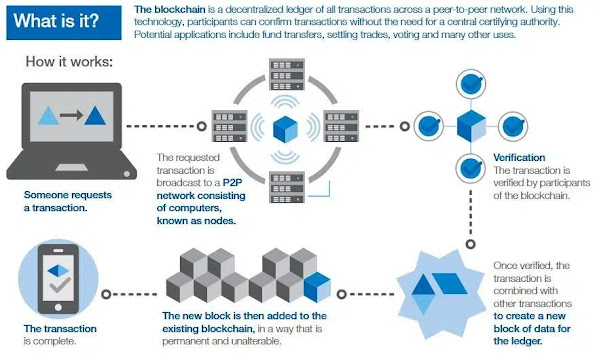Carbon markets have traditionally been centralised, impenetrable, and illiquid, resulting in very limited market participation. Blockchain has the potential to expand existing carbon markets and create new ones for a wider range of stakeholders, including small businesses and individuals. The technology records transactions publicly and permanently, helping to promote traceability and honesty.
Blockchain technology has the potential to improve carbon market trading in the following ways:
1. Building Consumer Trust and Preventing Greenwashing
One of the greatest challenges in carbon markets trading is the inaccuracy and unreliability of data. Many businesses have fallen victim to greenwashing. However, blockchain technology offers a much more transparent and distributed method of keeping track of transactions, giving consumers a detailed audit record for all the parts of a product across all phases of its lifecycle.
2. Eradicating Double Counting
Blockchain has the potential to remove the possibility of duplicate counting – a situation where two parties claim the same emission reduction or carbon removal – and can strengthen the reliability, which decreases energy usage and will attract the participation of private finance, microfinance, and crowdfunding.
3. Effective Tracking of Carbon Markets
Blockchain can record a carbon credit’s complete journey, from creation through purchase to retirement. With the help of transparent credit tracking made simple by blockchain technology, voluntary markets might be expanded and made more accessible. The potential for aggregating small purchases via a transparent distributed ledger could assist regular consumers in reducing their environmental impacts.
The technology can offer more transparency regarding tracking GHG emissions and make it easier to track and report emission reductions, thereby addressing possible double counting issues. It could serve as a tool to monitor the progress made in implementing the Nationally Determined Contributions (NDCs) under the Paris Agreement, as well as in company targets.
4. Streamline and Accelerate Carbon Trading
As opposed to either centralised or decentralised networks, the blockchain prevents monopolisation dominance of the system by eliminating the need for middlemen and enabling more streamlined and direct pathways for buying and selling credits. It can reduce the time required for clearance and trade approval by eliminating the requirement for intermediaries such as clearing houses. The use of smart contracts can accelerate the buying and selling of carbon credits by digitalising the negotiation and agreement process.
5. Enhance Carbon Emission Trading
Blockchain technology has the potential to enhance the carbon asset trade system. All the credible information gathered from a blockchain can assist businesses or organisations in identifying their issues and the reasons why they have not been eco-friendly yet. As such, they will find it simpler to define what being eco-friendly means for them and to establish suitable ways of achieving it.
6. Facilitate Clean Energy Trading and Ensure Appropriate Use of Funds
When it comes to finding accurate information about carbon credit, such as validation and verification, there is a credibility problem. Blockchain technology can address that by enabling the creation of systems for peer-to-peer renewable energy trading. Consumers would be able to buy, sell, or trade renewable energy with one another by using tokens or tradable digital assets representing a specific amount of energy production.
7. Enhance Climate Finance Flows
Blockchain technology has the ability to accelerate the development of crowdfunding and peer-to-peer financial transactions in support of climate action, while also ensuring that funding is assigned to projects in a transparent manner. Blockchain will ensure that the revenue generated is used solely to address carbon emission issues and not to fund any alternative political agenda.
What is the Current State of Blockchain Technology in the Carbon Market?
The use of blockchain technology in carbon market trading is still relatively new, and many studies are being conducted around the world to determine the technology’s suitability for improving carbon trading. A 2022 study revealed that companies nowadays are more willing to participate in carbon pilot projects using blockchain technology.
Another study identified 39 organisations that are developing blockchain solutions for carbon markets across two use cases: emissions-trading schemes and voluntary carbon markets. Among them are IBM and Ben&Jerry’s, both of which recently collaborated with blockchain companies to make carbon offsets more accessible to everyday consumers. IBM is also collaborating with Veridium Labs to develop digital tokens to facilitate the trading of carbon credits.
Poseidon is a pioneer in voluntary carbon markets, focusing on retail integration and pinning carbon credits to everyday purchases. CEO Laszlo Giricz explains: “When we realized that using the Stellar blockchain transactions could be done in three seconds and at such a low cost, we realised we could now transact in grams of carbon. Carbon credits could be incorporated into retail transactions at the point of sale for the first time.”
Other companies and organisations that are using or developing blockchain technology in their carbon credits trading include ClimateTrade, AirCarbon Exchange, Powerledger, JustCarbon, Likvidi, Phaeton Blockchain, Carbonex, Blockchain for Climate Foundation.
Although blockchain technology is still in its infancy and early stages of development, it has the potential to be the best technology in the near future for addressing the challenges of transparency in carbon trading.

